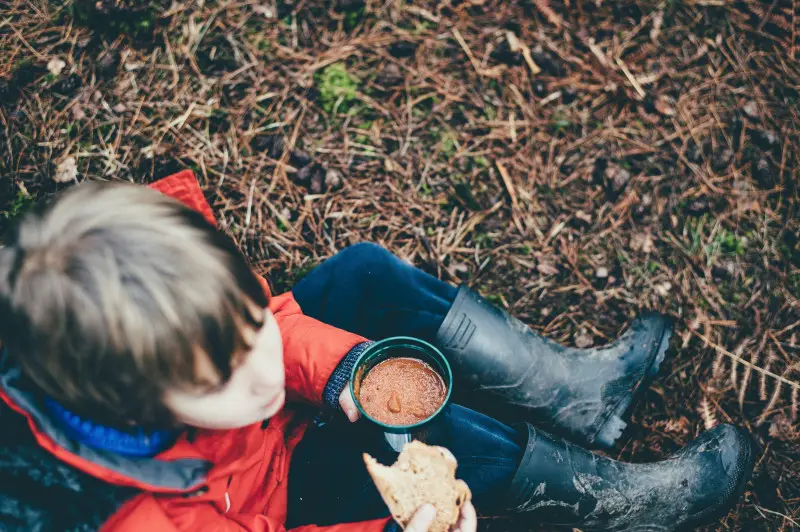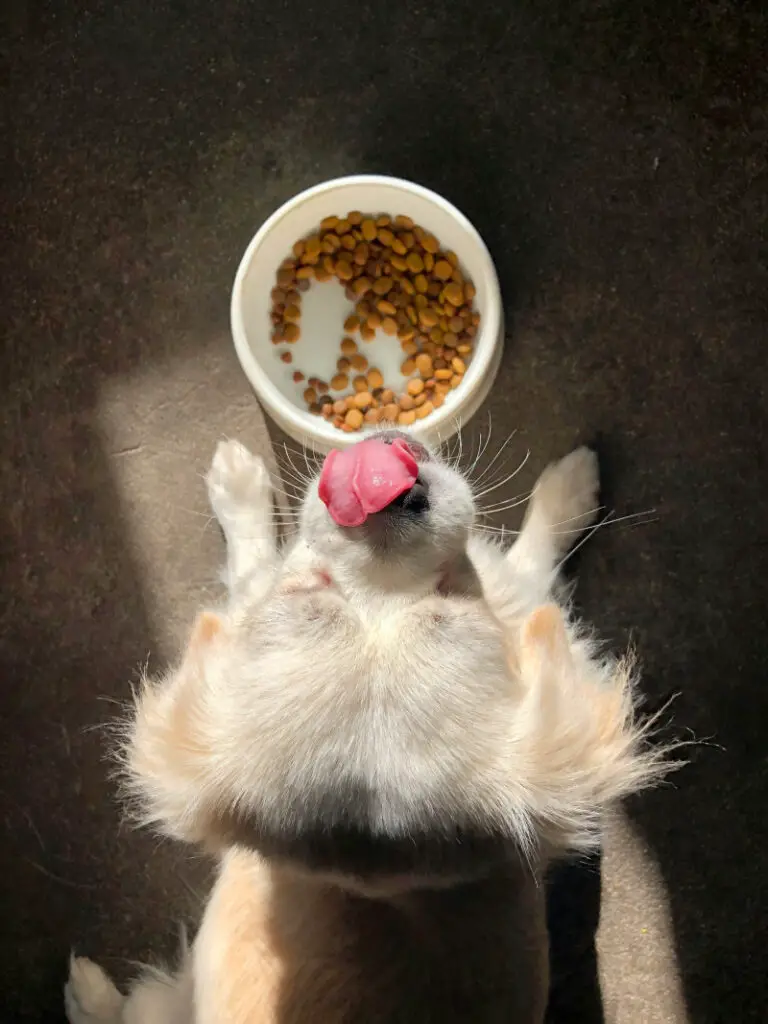“
As a dedicated dog owner, you may often find yourself meticulously monitoring your pet’s eating habits. Despite your vigilance, there are instances when your furry friend may just surprise you by gobbling up something unexpected. If your canine companion ate bread, for instance, rest assured, this is a situation many pet owners encounter.
Unlike humans, dogs have a different digestive system and nutritional requirements. Understanding this biology becomes a crucial step towards comprehending how your dog’s body processes certain foods. Many of us poor Puppy Parents have been surprised by our canine companion’s uncanny ability to swipe some unattended food, and not surprisingly, bread being a common staple food in most households often falls victim to these stealthy snacking strikes.
The critical factor here is to understand the canine digestive system. Dogs evolved as omnivores with a bias towards protein, meaning nutrients and their needs are different from ours. This, in turn, affects their capability to process foods like bread – a staple in human diets but not customarily part of a dog’s cuisine. While they can digest and extract energy from it, bread doesn’t offer a substantial amount of the balanced nutrients dogs need for energy and overall health.
With bread being a frequent item in our diet, it’s natural to question its potential effects on our dogs. Is it harmful? Or harmless?
Diving into our topic, it’s important to know that dogs and bread ingestion don’t necessarily send alarm bells ringing immediately. Dogs generally can digest bread in reasonable quantities. However, like any other human food not specifically intended for dogs, variables like the type of bread, quantity consumed, and the individual dog’s health condition play significant roles, which can lead to a variety of reactions after a dog eats bread.
Over the next sections, we will unravel these conditions and help you understand, in real terms, the implications of this seemingly benign occurrence: your dog eating bread. These insights will arm you with the knowledge to keep your fur baby safe, healthy, and begging for the right types of treats.
“”
Table of Contents
What happens when your dog eats bread?
When a dog swallowed bread, the immediate reaction can range from absolutely nothing noticeable to displays of discomfort. For most dogs, eating bread doesn’t result in any dramatic scenarios, but there are circumstances where consuming bread can lead to some issues. Let’s have a look at what might happen in response to canine eating bread.
Immediate reactions
Natural canine response
Firstly, it’s necessary to know that the gastrointestinal tract in dogs works differently than in humans. Their system processes food much quickly, which could help if your dog consumes something less than desirable. This fast digestion can sometimes prevent significant issues when a small amount of bread is eaten.
Potential symptoms
However, when dogs overindulge in bread, that’s when the problems may arise. Consumption of large amounts can cause bloating, vomiting, and discomfort due to the filling bread expanding in the stomach. Bread is also high in calories, so regular or large quantities can contribute to obesity and related health issues in dogs.
Dangers of large quantities
Also, if a large amount is eaten, it could potentially cause a blockage in the gastrointestinal tract – an emergency situation that needs immediate veterinary care. These incidents of bloat are rare but can be a severe consequence of dogs and bread ingestion if not managed promptly.
Different types of bread and their impact
White bread, whole grain, etc
It’s not just the amount of bread, but also the type of bread can impact the dog’s reaction to it. Whole grain breads, in modest amounts, can be offered to dogs as a treat. However, it’s best to avoid heavily seasoned breads or those with added sugar, as these can lead to upset stomachs and other health issues.
Bread with ingredients toxic to dogs
Also, be cognizant of ingredients that could be toxic to dogs. Garlic bread, for example, is a definitive ‘no’ in a dog’s diet and bread as garlic is toxic to them. Similarly, breads containing the sweetener Xylitol can be extremely dangerous, even life-threatening. Therefore, you should always know exactly what’s in the bread your dog may get into.
Bread dough
An important aspect to highlight is the risk associated with bread dough. The raw dough presents a unique danger as the yeast can continue to ferment in the dog’s stomach, producing alcohol and causing alcohol poisoning. On top of this, the dough can expand, leading to bloat, a life-threatening condition. If your dog consumes bread dough, it’s considered a medical emergency, and immediate veterinary help is needed.
Understanding food tolerance in dogs
Anecdotal observations
Reactions can vary greatly depending on individual food tolerance in dogs. Some pets can consume bread once in a while without any adverse effects, while others may experience allergic reactions, digestive issues or weight gain. Observing your pet’s reaction to bread consumption allows you to gauge its tolerance and make appropriate feeding decisions.
Expert opinions
Veterinary professionals generally agree that while bread is not inherently toxic to dogs, it doesn’t supply any significant nutritional value and therefore should not be a staple in a dog’s diet. Every dog is unique, so what works for one might not work for another. When in doubt about introducing new food to your pet’s diet, always consult with your vet.
“”
What should you do if your dog eats bread?
Given the different potential implications of dogs and bread ingestion, understanding the right course of action when your dog eats bread is vital. Let’s navigate through the steps you should take if your dog has swallowed bread.
Immediate steps to take
Checking your dog’s state
Firstly, you must check your pet’s overall physical state. Watch out for any signs of discomfort such as bloating, vomiting, or lethargy. Is their behavior normal or have they become lethargic or overly restless? A calm inspection can often help discern whether the bread consumption has had an adverse effect on your furry friend.
Identifying the type and quantity of bread eaten
Knowing what type and how much bread the dog ate is important. As mentioned earlier, certain bread types like garlic bread can cause increased health risks. Similarly, the quantity plays a crucial role-while a small bite might not cause significant issues, a whole loaf can lead to complications. Identifying these factors will dictate the subsequent steps to take.
Possible home remedies
Should you find your dog displaying mild discomfort after bread consumption, simple home remedies such as a bland diet or increased hydration may help smooth digestion. Walking your dog can be beneficial, which can help in digestion and relieve some discomfort. However, these are only recommended for mild cases where dogs show minimal signs of distress.
When to contact the vet?
Signs that warrant professional assistance
Pet owners should always be alert for signs that warrant immediate professional assistance. If your dog has consumed harmful ingredients like garlic, uncooked dough, or a large quantity of bread, seeking immediate veterinary care is advised. Similarly, persistent vomiting, diarrhea, or visible bloating should also warrant an immediate vet visit.
The role of vets in this situation
Veterinarians play a crucial role in such scenarios. They can effectively diagnose the issue based on the symptoms and the dog’s medical history. Following this, they can advise or carry out necessary treatments, ranging from dietary changes and medication to surgery, in the worst cases.
Preventative advice from professionals
Lastly, experts can provide valuable advice on preventing such mishaps in the future. By understanding the potential hazards associated with human food, owners can better protect their pets. Thus, discussing this situation with a vet can help prevent similar incidents in the future.
Prevention is better than cure
Training your dog not to eat everything
Training your dog to resist the temptation of grabbing everything edible can significantly reduce such incidents. Using positive reinforcement methods, you can train your canine buddy to respond to commands like “drop it” or “leave it”, crucial in situations where harmful food might be within their reach.
Proper storage of bread and other foods
Last but not least, proper storing of food can keep it off your dog’s radar. Keeping your bread and other potential allergens or toxic food to dogs in high, secure places can help guard against your furry friend’s counter surfing adventures. Remember, with a bit of training and proper storage, accidents like your canine eating bread can be substantially minimized for a healthy and happy pet life.
“”
Managing the situation in the long term
After your initial response to the situation is over, it’s worth considering the bigger picture. This bread-consuming incident can serve as a wake-up call for more attention to your dog’s overall diet, a dog-friendly household, and awareness of potential hazards. Here’s how you can transform this potential health concern for the betterment of your pet’s future.
Lessons to be learned
Better understanding your dog’s dietary needs
Experiences like these can offer valuable insights into your dog’s dietary needs. Dogs are primarily carnivorous, and while they can consume certain plant materials, not all human foods are safe or nutritious for them. If you find that your dog swallowed bread without any noticeable adverse effects, that doesn’t make bread an advisable regular addition to their diet. Rather, it presents an opportunity to understand the distinct nutrition needs of dogs and helps guide you towards ensuring a balanced diet for your pet.
Realizations about canine nutrition
Such events could also spark a realization about canine nutrition. Although dogs can handle certain grains and plant materials, they are not designed primarily to digest carbohydrates. They are inherently meat lovers, and their nutrition should be protein-focused. Instances like canine eating bread also remind pet owners that many foods harmless to humans can pose a threat to dogs.
Impact of this event on future meal planning
The aftermath of your dog eating bread could lead to better meal planning for your dog in the future. Ensuring that their diet is balanced and tailored to their specific needs, with the right proportions of proteins, carbohydrates, and fats, can go a long way in maintaining their health and happiness. Realizing the health effects of bread on dogs can also steer you away from feeding table scraps and leftovers to your pet.
Building a safe environment for your pet
Designing a dog-friendly household
The safety and wellbeing of your pet ultimately lie in ensuring a dog-friendly household. Learning from bread ingestion incidents is one way to do so. You can start by storing food out of your dog’s reach and keep a close eye at meal times to prevent any food snatching incidents.
Awareness of potential hazards
Awareness is the first step towards prevention. Bread is just one of the many common household foods that could potentially harm your pet. Being aware of your dog’s reactions to bread helps raise overall awareness about potential hazards, allowing you to take preventive measures avoiding not only bread but also other dangerous foods.
Training yourself to prevent repeat incidents
Training is not just for your pet; it’s also for you as a pet parent. Learn to identify signs of dietary distress and educate yourself about foods that are potentially harmful to your pet. It’s also important to develop good habits like closing pantry doors, cleaning up immediately after meals, and being mindful of where you leave your food.
Communication with other caregivers or family members
Sharing this incident
If an incident of dogs and bread ingestion occurs in your home, it’s essential to communicate this experience with anyone else involved in the care of your pet. This could include family members, dog sitters, or anyone else your dog interacts with on a day-to-day basis.
Coordinating efforts to prevent recurrence
Once this event is communicated, all caregivers can work together to prevent a recurrence. This may involve establishing rules for feeding the dog, securing potential hazards, or teaching younger members how to appropriately interact with the dog around food. It’s a team effort to ensure the safety and happiness of your pet, and a bread-eating incident can provide valuable lessons to all family members in ensuring a safe environment for your pet.
“
Revisiting the Main Topic – A Learning Experience
When you first ask yourself, ‘What do you do if your dog eats bread?’, it’s understandable to be consumed with immediate concern and questions. This moment may be filled with tension, but as we’ve discovered, it can also be a valuable opportunity for growth. Instead of merely being an unfortunate incident, this situation serves as a chance to deepen our understanding of our dogs’ dietary needs and well-being.
Experiences like your dog swallowing bread can provide beneficial insights that extend beyond the incident itself. It forces us to be cognizant of not only the types of food our pets can safely consume but also the quantities in which they are safe. The instance, as daunting as it may be initially, could well serve as a reminder of how seemingly harmless foods can pose potential threats to our pets, or at a minimum not offer the nutritional value they need.
Our exploration into this situation reinforces the importance of being proactive in pet ownership. Providing the safest home environment includes mindful food storage and responsible meal habits. Dog-friendly households are not created overnight – they require understanding, practice, and a little bit of organization. The diligence exercised and the protocols put in place out of love and concern for our pets often results in secure, happy homes for our canines.
Most importantly, our exploration affirms the importance of understanding our pets. Dogs may be man’s best friend, but to be the best friend to our dogs, we must strive to grasp their needs, especially dietary. Yes, bread is not inherently toxic to dogs, but it’s not especially beneficial either. Instances like dogs and bread ingestion remind us that our dogs’ digestive systems and dietary requirements differ from ours, and it’s essential to respect these differences. Our responsibility as pet owners is to supply diets that meet our pets’ specific needs for their most beneficial nutrition.
So, let’s use these lessons as a guide to becoming more informed and attentive pet owners and making our homes a safer place for our canine companions. With care and caution, we can prevent many of these diet-related accidents, ensuring that our dogs remain happy, healthy, and far away from the bread basket!
”




